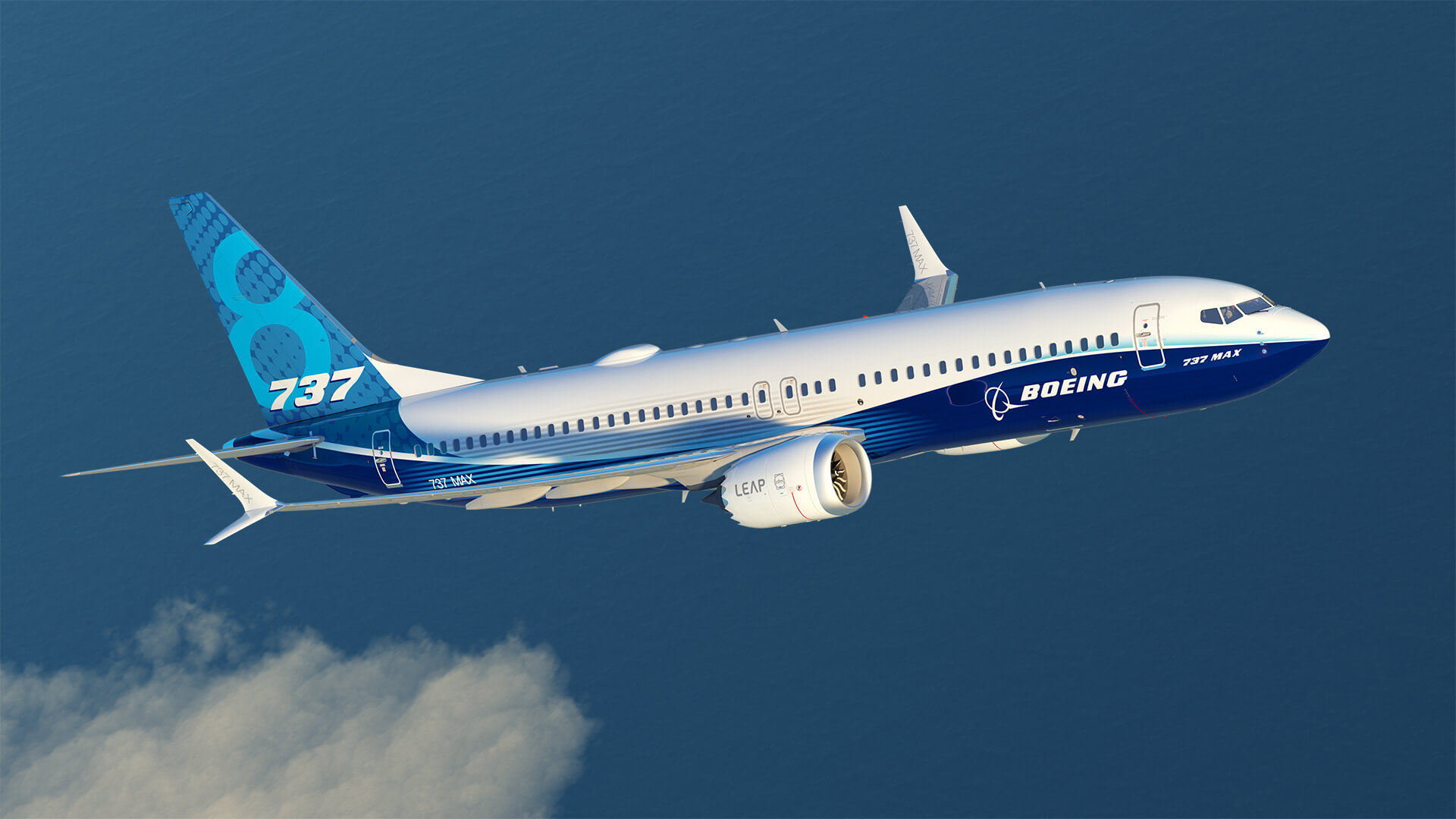The Boeing 737 MAX Crashes
In the early 2010s, Boeing found itself under immense pressure. Rival aircraft manufacturer Airbus had launched the A320neo, a new generation of fuel-efficient jets that were quickly attracting orders from airlines around the world. The A320neo offered reduced fuel consumption without requiring significant retraining for pilots. Boeing needed a response and fast.
Rather than develop a brand-new aircraft, which could take a decade or more, Boeing chose to modify its most successful workhorse, the 737. The result was the 737 Max, a modernised version equipped with larger, more efficient engines. These engines were placed further forward and higher on the wing to accommodate their size, which changed the plane’s aerodynamics.
To address potential stall risks introduced by this change in engine position, Boeing installed a software system called the Manoeuvring Characteristics Augmentation System, or MCAS. This system was designed to push the aircraft’s nose down if it sensed that the plane was climbing at too steep an angle. It was supposed to operate in the background, almost invisible to pilots. That decision would prove catastrophic.
The First Crash: Lion Air Flight 610
On October 29, 2018, Lion Air Flight 610 took off from Jakarta, Indonesia. Within minutes, the plane began to behave erratically. The nose dipped sharply again and again, despite the pilots’ efforts to correct it. The crew had no idea what was happening. They had received no training on MCAS and were not even aware of its existence.
The aircraft plummeted into the sea, killing all 189 people on board. In the aftermath, investigators discovered that MCAS had activated due to a faulty angle-of-attack sensor. Believing the plane was climbing too steeply, the system pushed the nose down repeatedly. The pilots fought against it but were ultimately unable to regain control.
This was not just a case of pilot error. It was a system failure. Worse, it was a system that Boeing had chosen not to disclose fully. MCAS had not been mentioned in the flight manual, and no simulator training had been required for pilots transitioning from earlier 737 models.
The Second Crash: Ethiopian Airlines Flight 302
Five months later, on March 10, 2019, Ethiopian Airlines Flight 302 took off from Addis Ababa. Like Lion Air Flight 610, this Boeing 737 MAX 8 experienced difficulties almost immediately after takeoff. Again, MCAS had engaged based on faulty sensor data, and again, it repeatedly forced the nose of the plane downward.
Despite the efforts of the flight crew, the aircraft crashed six minutes after takeoff, killing all 157 passengers and crew. The similarities between the two crashes were undeniable. Both involved brand-new aircraft. Both involved unexpected behaviour related to MCAS. Both involved a tragic loss of life within minutes of takeoff.
This was no longer a series of isolated incidents. This was a pattern.
The Global Grounding
Following the second crash, the global aviation community reacted swiftly. Aviation authorities around the world grounded the Boeing 737 MAX fleet. While Boeing initially resisted, insisting that the aircraft was safe, public pressure and mounting evidence left little choice. Within days, the entire Max fleet was grounded worldwide.
It was the longest grounding of a commercial aircraft in United States aviation history. Flights were cancelled, deliveries halted, and confidence in Boeing’s safety culture was shaken to its core.
Investigators began to dig deeper. They uncovered troubling facts about the development of the Max. Boeing had marketed the aircraft as a simple upgrade to the previous 737 models to avoid the need for expensive simulator training. The company had downplayed the importance of MCAS, insisting that it did not need to be highlighted to pilots.
More shockingly, MCAS relied on a single angle of attack sensor, with no redundancy. If that one sensor failed, the system could behave erratically, as it had in both crashes. Boeing had taken a gamble to get the Max into service quickly and cheaply. That gamble had failed.
Corporate Fallout and Legal Trouble
The aftermath of the crashes was devastating, not just in human terms, but also in terms of financial and reputational damage. Boeing faced lawsuits from victims’ families, scrutiny from regulators, and backlash from airlines. The company’s stock value plummeted. Airlines cancelled orders. Executives faced congressional hearings.
In 2021, Boeing reached a settlement with the United States Department of Justice, agreeing to pay billions in compensation and fines. This included a criminal charge of conspiracy to defraud the FAA, which was deferred as part of the agreement. Boeing promised to change its internal safety practices and improve oversight.
Yet controversy continued. Many felt the penalties were too lenient and failed to hold individuals accountable. Internal messages revealed that some Boeing employees had expressed concerns about MCAS during its development, but these concerns were either ignored or overruled.
Meanwhile, the families of crash victims pushed for further accountability. Lawsuits continued, and congressional hearings revealed a troubling culture inside Boeing, one that prioritised cost-saving and speed over safety and transparency.
The Max Returns to the Skies
After nearly two years of grounding, the Boeing 737 MAX was cleared to fly again in late 2020, following significant modifications and updates. These included software updates to MCAS, additional training for pilots, and improved sensor redundancy.
Airlines slowly reintroduced the aircraft, and passenger confidence gradually returned. Still, the shadow of the crashes lingered. The name “737 MAX” had become synonymous with corporate failure, flawed engineering, and the deadly consequences of cost-cutting.
Boeing’s leadership changed, with a new CEO pledging to restore trust and rebuild the company’s safety culture. Internally, the engineering teams were restructured to improve independence and communication. The company took steps to separate business decisions from safety oversight.
A Reminder Written in Tragedy
The Boeing 737 MAX crashes were a clear indicator of what can happen when safety is compromised. More than 340 lives were lost, and countless families shattered, not due to a single malfunction, but because of a series of decisions made in boardrooms far from the cockpit.
It was not just a software failure. It was a systems failure. Engineers were pressured. Warnings were ignored. Regulators were misled. The very safeguards meant to protect passengers were bypassed in the name of competition and speed.
And yet, out of this tragedy came change. Regulators around the world reviewed their certification processes. Boeing was forced to accept greater oversight. Airlines demanded better training and more transparent communication. Pilots spoke up, determined not to be left in the dark again.
The Ongoing Impact
As of 2025, the Boeing 737 MAX remains in service and is one of the most heavily scrutinised aircraft flying today. Additional incidents involving other models in the 737 MAX family, including a mid-flight panel blowout in 2024, have kept safety concerns in the headlines and ensured that Boeing remains under regulatory scrutiny.
The reputational damage to Boeing will take years to repair. Trust, once broken, is not easily regained. Customers, airlines, and the flying public now view the brand with far more caution. Still, the Max crisis has compelled the aviation industry to reassess how planes are designed, certified, and operated. The hope is that the lessons learned from these crashes will result in stronger oversight, better training, and aircraft that are truly as safe as they should be.
The Boeing 737 MAX Crashes FAQ
The crashes were primarily caused by a software system known as MCAS, which pushed the aircraft’s nose down based on faulty sensor data, combined with a lack of pilot awareness and training on how to disable it.
A total of 346 people died: 189 in the Lion Air crash in 2018 and 157 in the Ethiopian Airlines crash in 2019.
Boeing paid large fines and compensation, but many critics argue that the penalties were not severe enough and that no individuals were held criminally responsible.
The aircraft was re-certified after extensive modifications and is now in commercial service, but scrutiny of Boeing’s safety practices continues.






